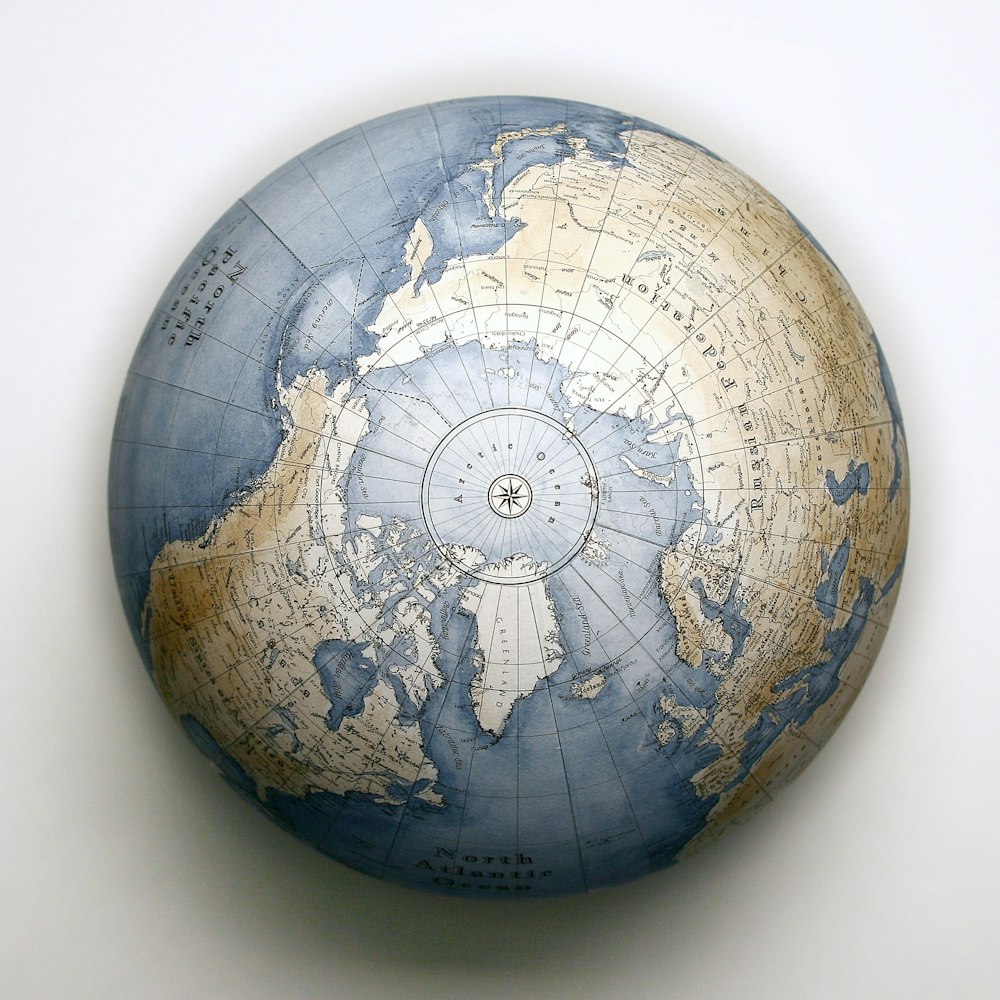
Image Source: Unsplash
Have you ever wondered about the world we live in? How vast it is, and how it works? One of the most important tools for understanding our planet is the globe. A globe is a spherical representation of the Earth, and it is an essential tool for geographers, cartographers, and students alike. But what makes a globe so special? In this article, we will explore the parts and characteristics of the globe, and why it is such a valuable tool for understanding our world. Whether you are a student, a teacher, or just someone curious about the world around you, this article will give you a deeper understanding of what a globe is, how it works, and why it is so important. So grab a seat, and let’s dive in!
History of the Globe
The concept of the globe has been around for centuries. The ancient Greeks were the first to recognize the Earth was spherical, and they created globes to represent it. However, it wasn’t until the 15th century that the first modern globes were created. The first modern globe was created by Martin Behaim, a German mapmaker in 1492. Since then, the use of globes has become widespread and has become an important tool for understanding our planet.
The Parts of a Globe
A globe is made up of several different parts, each of which plays an essential role in representing the Earth accurately. The most important parts of a globe include the equator, prime meridian, Tropic of Cancer, Tropic of Capricorn, and the International Date Line. The equator is an imaginary line that circles the Earth at 0 degrees latitude, dividing the Earth into the Northern and Southern Hemispheres. The prime meridian is an imaginary line that circles the Earth at 0 degrees longitude, dividing the Earth into the Eastern and Western Hemispheres. The Tropic of Cancer and the Tropic of Capricorn are imaginary lines that circle the Earth at 23.5 degrees North and 23.5 degrees South latitude, respectively. Finally, the International Date Line is an imaginary line that runs from the North Pole to the South Pole, dividing the Earth into two halves and creating two different calendar days.
Characteristics of a Globe
In addition to the parts of a globe, several characteristics make it an essential tool for understanding our planet. The most important characteristics of a globe include scale, projections, and latitude and longitude. Scale refers to the ratio of distance on the globe to the actual distance on the Earth’s surface. Projections refer to the different ways of showing a curved surface on a flat surface. Latitude and longitude refer to the imaginary lines that run across the Earth’s surface, allowing us to locate any point on the Earth’s surface precisely.
Types of Globes
There are three main types of globes: physical, political, and topographical. Physical globes emphasize the physical features of the Earth, such as landforms, bodies of water, and natural resources. Political globes, on the other hand, emphasize the political boundaries of the world, such as country borders, cities, and capitals. Topographical globes show the contour lines of the Earth’s surface, highlighting the elevation changes and the physical features of the Earth.
How to Read a Globe
Reading a globe may seem daunting at first, but it is relatively simple once you understand the basics. The first step is to locate the equator, prime meridian, Tropic of Cancer, Tropic of Capricorn, and the International Date Line. Once you’ve done that, you can use the latitude and longitude lines to locate any point on the globe accurately. Finally, you can use the scale to determine the actual distance between two points on the Earth’s surface.
Benefits of Using a Globe
Using a globe has several benefits. For one, it allows us to understand the world visually and intuitively. It also helps us to understand the relationship between different parts of the world and how they are connected. Additionally, studying a globe can help us to understand the physical and political geography of the world, making it an essential tool for students and educators alike.
The Future of the Globe
In today’s digital age, the use of globes has become less common, with digital maps and satellite imagery becoming the norm. However, globes remain an essential tool for understanding our planet, and their use is still widespread in education and research. Additionally, there has been a resurgence in the use of physical globes as decorative objects, with many people using them as statement pieces in their homes or offices.
Globe FAQs
Q: Can a globe be used for navigation?
A: While globes were traditionally used for navigation, they are not practical for use on ships or planes, as they are too large and fragile.
Q: Are all globes the same size?
A: No, globes come in a variety of sizes, from small desktop models to large floor-standing models.
Q: Can globes be customized?
A: Yes, many companies offer custom globes, allowing customers to choose the size, style, and features that best suit their needs.
Conclusion
In conclusion, the globe is an essential tool for understanding our planet. By representing the Earth visually and intuitively, it allows us to understand the relationship between different parts of the world and how they are connected. Whether you are a student, a teacher, or just someone curious about the world around you, the globe is an invaluable resource that can help you to gain a deeper understanding of our planet. So why not invest in the globe today and start exploring the world in a whole new way?


